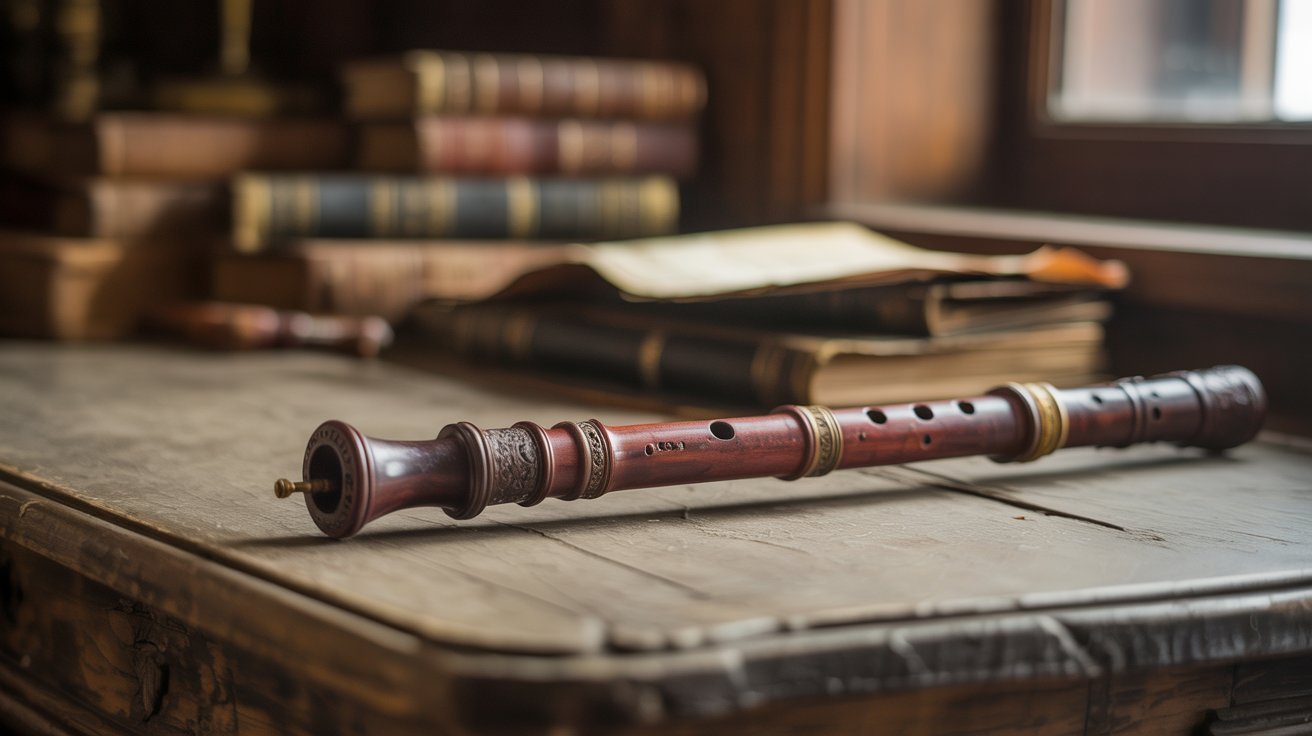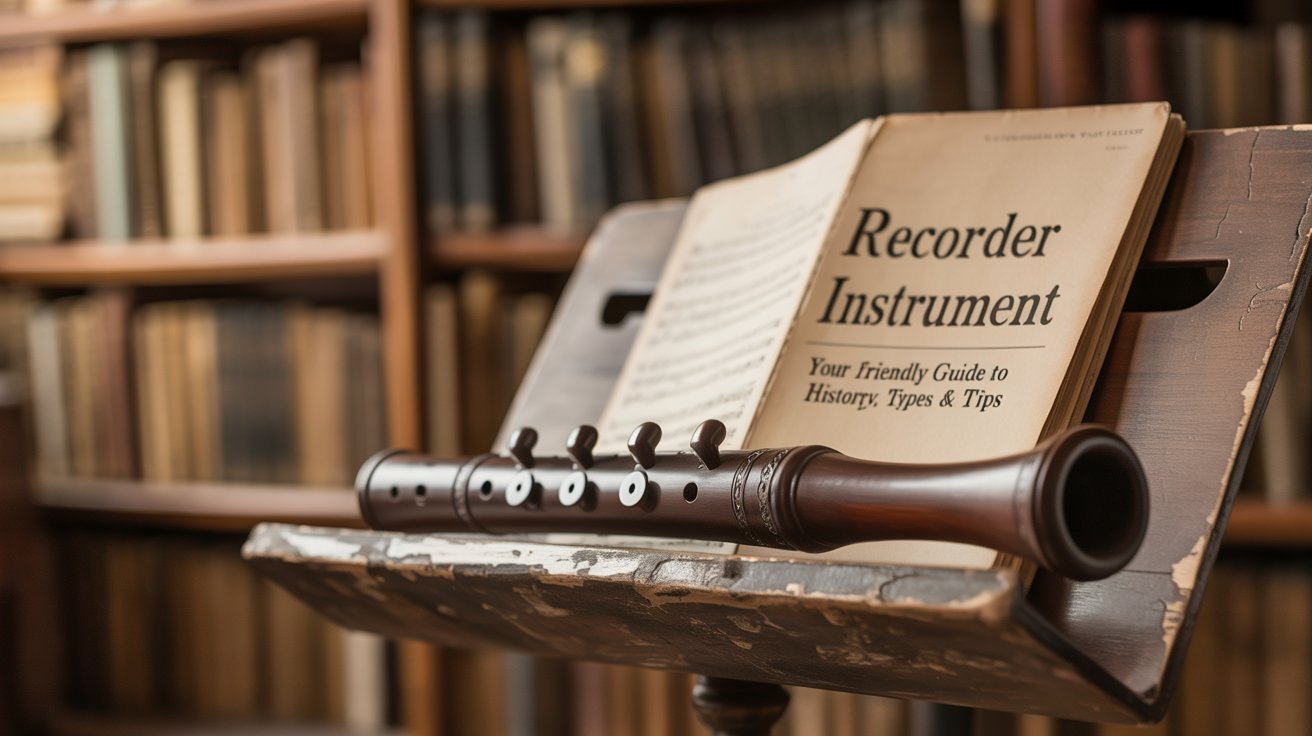Have you ever blown into a plastic tube in music class and produced a surprisingly sharp squeak? Most likely, you were handling an instrument known as a recorder. The recorder’s charm and simplicity have helped millions start their musical journey. But there’s more to it than just classroom memories.
In this article, we’ll explore what makes the recorder instrument special. From its rich history and different types to practical tips on how to play and take care of one, consider this your ultimate beginner-friendly guide. Whether you’re a student, a parent, or someone rediscovering music later in life, this guide is designed to make learning simple and enjoyable.
What Is the Recording Instrument?
The recorder instrument is a woodwind musical instrument with a whistle-like mouthpiece, called a fipple. It belongs to the flute family but is held vertically and played by blowing air through the mouthpiece while covering holes to produce different notes. The recorder produces a sweet, melodic tone that has made it a staple in music education and a respected instrument in early music ensembles.
A Brief History
The recorder instrument dates back to the Middle Ages, gaining popularity during the Renaissance and Baroque periods. Composers like Vivaldi and Bach wrote music specifically for it. Its design has remained relatively unchanged over centuries, which is a testament to its musical versatility.
While it faded from orchestras in the 18th century, the 20th century brought a revival, especially in education and early music performance. Organizations and ensembles dedicated to historically informed performance helped bring the recorder back into classical music circles. Its accessibility and low cost also made it popular in schools worldwide.
Today, it’s loved for its affordability, portability, and ability to produce beautiful melodies with a sweet, clear tone. It’s also a gateway instrument that helps learners transition to more complex woodwinds.

Types of Recorder Instruments
Recorders come in different sizes, each producing a unique pitch and serving different musical roles. Here are the main types:
Sopranino Recorder
The soprano is the smallest recorder and produces a very high pitch. Early music ensembles typically use it for its bright and clear tone. This recorder can sound almost like a bird, making it excellent for adding sparkle to an ensemble.
Soprano Recorder (Descant)
This is the most common type found in schools. It’s small, easy to play for beginners, and it plays in the key of C. Its range and simplicity make it ideal for children and classroom settings, where students can learn the basics of melody and rhythm.
Alto Recorder
The alto recorder has a richer and deeper sound than the soprano. Solo and ensemble music frequently utilizes the alto recorder, which plays in the key of F. Intermediate and advanced players often prefer this recorder instrument for its expressive range and warmer tone.
Tenor Recorder
Larger than the alto, the tenor recorder has lower tones and requires more finger stretch. It is a wonderful choice for adult learners looking for a mellow sound. It can be more challenging physically, but it offers a rewarding depth of tone.
Bass Recorder
The bass recorder produces a deep, resonant sound. Recorder choirs use it, and managing its low notes requires good breath control. It adds a foundation to ensembles and is often favored by experienced players.
Most beginners start with a soprano or alto recorder. As you improve, you can explore other sizes to expand your musical capabilities. Some ensembles even use all five main types together, creating a full, choral sound.
How to Get Started with the Recorder
Learning the recorder can be fun and rewarding. Most modern plastic recorders come in three parts: the headjoint, body, and footjoint. Simply twist them together gently. Be sure not to force the pieces, as the pressure could damage the joints.
When playing, sit or stand straight. Keep your left hand on top and your right hand below. Use the pads of your fingers to completely cover the holes in order to produce clear notes. Avoid using your fingertips, as the pads can lead to leaky notes and poor sound.
To make your first sound, blow gently—not too hard. Tongue lightly using a “too” or “doo” sound and practice holding long tones to develop breath control. Controlled breath is essential for steady, pleasing sound.
Start with basic notes like B, A, and G on the soprano recorder. For B, cover the thumb hole and the top front hole. For A, add the next finger, and for G, cover the first three holes. Using a fingering chart can really help guide your practice.
Helpful Tips for Beginners
- Practice in short sessions to avoid fatigue.
- Use a metronome to maintain a steady rhythm.
- Consider recording yourself to monitor your progress.
- Try playing along with beginner tracks on YouTube.
Common Mistakes and How to Avoid Them
Overblowing
If you blow too hard, the sound becomes harsh and squeaky. To fix this, blow softly and steadily. Think of blowing warm air onto a mirror.
Leaky Fingers
If the notes don’t sound right, your fingers might not be sealing the holes completely. Be sure to use the pads of your fingers, not the tips. Practicing slowly and deliberately helps develop this muscle memory.
Poor Posture
Slouching can make you tired quickly and restrict your breathing. Always sit or stand up straight and keep your shoulders relaxed. Your recorder should be at a comfortable angle, not pointing straight down.
Lack of Tonguing
If your notes sound blurry or undefined, you may not be using your tongue correctly. Light tongue strokes help clarify each note. Practice slow scales while saying “too” or “doo” for each note.
Taking Care of Your Recorder
Proper care ensures a longer life and better sound. After each use, wipe out moisture using a cleaning rod and cloth. Condensation inside the recorder can affect tone quality.
Occasionally, wash plastic recorders with warm, soapy water, but avoid doing this with wooden ones. For wooden models, use special bore oil to keep the wood hydrated and prevent cracking.
Store your recorder in a protective case and keep it away from direct sunlight or heat sources. For wooden recorders, check regularly for cracks and replace worn-out corks or joints when needed.
A well-maintained recorder sounds better and feels smoother to play, encouraging longer practice sessions.
Why Play the Recorder?
Besides being a wonderful starter instrument, the recorder offers many benefits. It helps improve breath control and lung strength. It also teaches music reading and finger coordination, all while building confidence and performance skills.
The recorder also encourages musical creativity. Because it’s relatively easy to learn, players can focus more on expression, phrasing, and dynamics early in their training.
Many students move on from the recorder to other woodwinds like the flute, clarinet, or saxophone. But the recorder itself can be quite rewarding, even at an advanced level. Professional recorder players perform in orchestras, early music ensembles, and even in modern compositions.
Easy Songs to Try
- “Hot Cross Buns”
- “Mary Had a Little Lamb”
- “Ode to Joy”
- “Twinkle, Twinkle Little Star”
- “Amazing Grace”
These songs are ideal for building confidence and mastering the basics of note transitions and rhythm.
Next Steps
As you improve, try playing with others in duets or recorder ensembles. You can also explore more complex music or switch to alto or tenor recorders for new challenges.
Look for online communities, local music clubs, or school bands that feature recorder groups. Participating in group music-making can significantly boost your skills and enjoyment.
There are also recorder method books, apps, and video lessons tailored for every level—from beginner to advanced.
Conclusion
The recorder instrument may be simple, but it’s far from boring. Whether you’re just starting or rediscovering it as an adult, this humble instrument offers a world of musical joy.
Grab a recorder, try out those first notes, and let your musical journey begin. Have questions or a favorite recorder memory? Share it in the comments below! Whether you’re playing for fun, school, or even performance, the recorder is ready to help you make music every step of the way.








